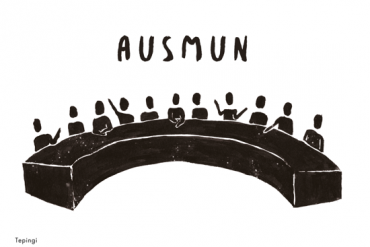A sociolinguistic perspective on the style differences between the older and younger generations when it comes to texting.

As a language student and a self-proclaimed linguist, I have grown accustomed to routinely analyzing our daily discourse and the way we perceive it. Since texting is the primary source of online communication today, my classmates and I were able to identify, detect, and assess the differences between how we text, and how the older generations do. It seems that we, Gen Z kids, are engulfed in a newly-refined culture that has its own vocabulary and lifestyle. This made our communication with older generations a little problematic.
In sociolinguistics, convergence is a style of speech that reduces the social distance between the speakers. When it comes to texting, the younger generations tend to use shortened messages with shortcuts and abbreviations, while the older generations tend to perfect their grammar and punctuation in a single, detailed, and clear text. Convergence, in this case, is recommended to be used when the younger generations converse with the older ones. This helps maintain a stronger, less distanced relationship between each other, especially when it comes to elder family members and friends. It establishes a common ground between the communicators, where things might not have been as they were perceived.
Those who grew up without texting did not have any influence on their speech in terms of changing their vocabulary and shortening it. Because of that, I observed that they tend to have more patience when it comes to reading and typing longer texts, as well as making sure their message is clear, correct, and carries no grammatical anomaly. Younger Millennials and elder Gen Z kids are more prone to double-text, which is a possible replacement of punctuation marks, or change of tone. We think the shorter the message is, the better.
Younger Millennials and elder Gen Z kids sometimes use emojis based on an underlying, modified meaning, which is created upon a prior understanding between one another. Aside from context, the adopted perception behind the winking and the flying kiss emoji, for example, is to suggest sarcasm, or whatever that does not serve the original purpose. The older generations, however, perceive and use them as they are: a wink or a flying kiss. Unlike us, their use of emojis does not carry any underlying meaning.
If there is one thing to note, it is that we may lean towards the style of the older generations when sending more formal messages. We become more aware of grammar, punctuation, word choice, and clarity. However, this may mean that the older generations depend on formality in their casual messages, as it originates from the written letters they used to send. Letters were only written in formal Arabic and English, instead of colloquial. Our generation has varying levels of formality and acts differently upon them. When talking to a close friend or relative, the tone being used is colloquial and sometimes slang, but the level rises to formal when addressing people from school or work, only if the topic of discussion is professional.
Sociolinguistic convergence is important. It bridges the generational gap, and erases the misperceptions between different generations. When texting older generations, we should make our messages clear and correct, while they should take a grasp of how texting is moderated. Millennials grew among the spur of texting, where the shorter the text, the cheaper the bill, hence the creation of the Millennial/Gen Z lexicon. Writing letters was the only resource of textual communication for a period of time prior to all that, which is why the older generations might still lean to this style of formality. This sums up why convergence is important to sustain understanding between the speakers with a generational gap.



